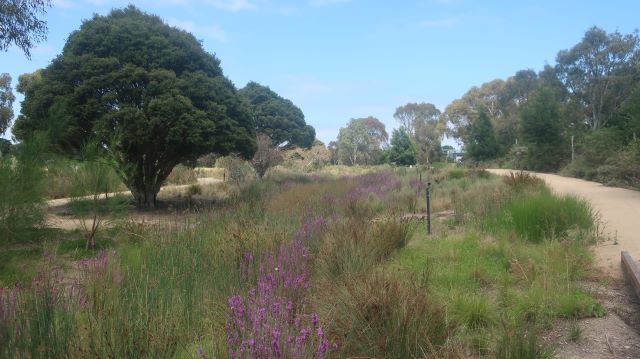
Chain of ponds at Yalukit Willam Nature Reserve
Today’s post, reproduced with permission, is by Gio Fitzpatrick. Gio is a naturalist advising the Yalukit Willam Nature Association, a community group supporting the transformation of the former Elsternwick Golf Course into the Yalukit Willam Nature Reserve.
A tiny act with huge ecological returns
This World Wetlands Day also happens to be a very special day in the development of our local chain of ponds at Yalukit Willam Nature Reserve (YWNR).
I received the news today that the pumps have been turned off to allow the ponds to undergo the natural and beneficial process of summer drying. This is a huge positive step towards restoring the biodiversity and ecological processes of the reserve.
As naturalist for the YWNA, I commend the decision and thank those responsible. Many waterbodies around Melbourne are artificially held in a compromised state of stasis but our ponds have now been liberated. To simply turn off the pump may seem a tiny act but in terms of ecological returns, it is huge. It will elevate our ponds from being yet another set of rather impoverished constructed wetlands to setting the stage for one of our region’s greatest natural spectacles.
What to expect
1/
As water begins to draw down and muddy pond beds are exposed, more specialised edge-dwelling waterbirds (shorebirds) are likely to drop in. They (most species) need open mud on which to pick and probe for invertebrates while having more or less panoramic views of their surroundings. They cannot forage among the tall, dense vegetation that currently dominates the edges. Species which could appear include Black-fronted Dotterel, Red-kneed Dotterel, Black-winged Stilt, Latham’s Snipe and Sharp-tailed Sandpiper (although, it is getting a little late in the season for the last two).
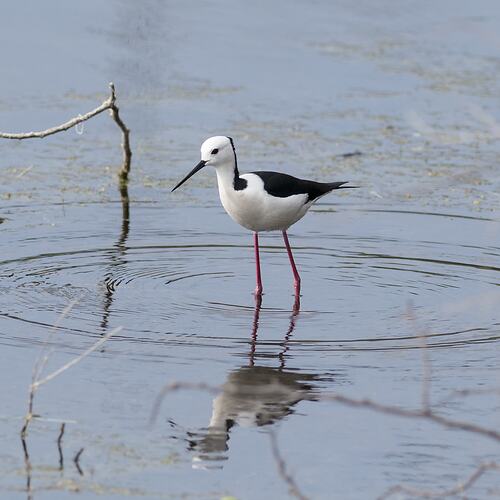
Photographer: David Paul Museums Victoria
https://collections.museumsvictoria.com.au/species/8212
2/
When only small puddles are left, expect to see many resident waterbirds making the most of the soup of prey which gets concentrated into the shrinking pools. In the past, the drainage of Elsternwick Park south lake attracted visiting Pelicans, White-necked Herons, Australian White Ibis and Pink-eared Ducks (all birds which tend not to visit the lake otherwise). Birds may feed on the abundant Gambusia (Mosquitofish) and so convert what is currently a major threat and limiting factor for biodiversity into food for native wildlife. It is quite likely that this boom in prey availability will stimulate the local White-faced Herons to breed again this summer.
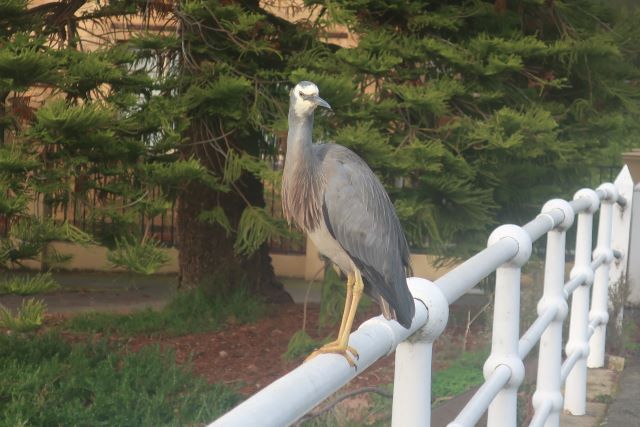
3/
By this time, aquatic, semi aquatic and even many terrestrial plants will begin invading the exposed pond bed en masse. They will germinate in the hundreds of thousands and outpace the grazing pressure of ducks which has hitherto obstructed their advance into the ponds. Grazing pressure by ducks will reduce overall as the exposed ground is a less inviting foraging zone and the hardened soil will provide a sturdier anchor for the roots of small seedlings.
4/
If the ponds sit dry for some time, all gambusia will be gone. Many terrestrial species of plants which have a ‘live fast – die young’ strategy will colonise the pond beds, put on a show of colour and set seed. These plants are adapted to and rely on cycles of boom and bust. They would be doomed and gone without such events. The unique ephemeral habitat that they create may, in turn, provide unprecedented wildlife surprises for us to observe. Eastern Rosellas may have a daisy seed feast, skinks and black field crickets may love the soil cracks and fresh flushes of vegetation, in turn attracting things like Sacred Kingfishers which prey on them … who knows …
5/
When water returns to the now vegetated pond beds, conditions will be perfect for frogs to breed. The flooded plants will become an underwater labyrinth among which tadpoles and many aquatic invertebrates can gain shelter. The surfaces of these plants will form biofilms upon which tadpoles, pond snails and glass shrimp forage. The lack of gambusia will allow tadpoles to reach maturity (gambusia bite the tails of tadpoles and eventually kill them) and they can then emerge as the first generation of frogs to fulfil their lifecycle on this patch of land for decades.
The chorus of frogs belting through all of the ponds at once is a very exciting prospect. As is the thought that today’s local kids could witness the wonder of frogs and metamorphosis right here in their home landscape as perhaps, their grandparents had.
6/
The bottleneck in aquatic predators in general along with a flush of plant growth will see a boom in microcrustaceans such as Cladocerans (Water Fleas) and Ostracods (Seed Shrimp). These have a similar life strategy to those plants mentioned in point 4 – get in quick and multiply like crazy before the slower predators or competitors get going. The clouds of microcrustaceans, feeding on phytoplankton may entice filter-feeding extraordinaires such as Pink-eared Ducks and (if we are extremely lucky) Australasian Shovelers to drop in for a feast.
7/
As the water sits high for a while, things will generally quieten down. Predator populations within the pond will reach carrying capacity, plants will thin out from the deeper areas, outwards and vegetation on the edges will thicken, covering muddy gaps and becoming increasingly dominated by just a few larger species.
8/
Soon it’ll be time for another dry spell, only this time the populations, eggs, seeds, spores and possibly even memories of those species which rely on wetland dynamism will have built up and be more ready than before. The show will only get more spectacular.
Many people who do not know the ecological processes at work may be distressed by the sight of a drying wetland and see it as process of degradation. In much the same way that the seeming calamity of a fire can be powerfully regenerative in some terrestrial environments in our region, many wetland types become more ‘healthy’ (diverse and productive) after drying out. I am so glad that we are now acknowledging this in the management of the reserve and I am sure that the community will get behind it.
Let Bayside Council know of your support for this seemingly small but hugely significant action.
This post was first published on Yalukit Willam Nature Association facebook page on 2 February 2024
2 Comments
-
Heather Wheat
An excellent post Janet. Brilliant news about the ponds. This morning I’ve learnt lots of new things. Thank you. And also for the butterflies. We’ve had many in our garden - the whites and others. Joyous things to watch.


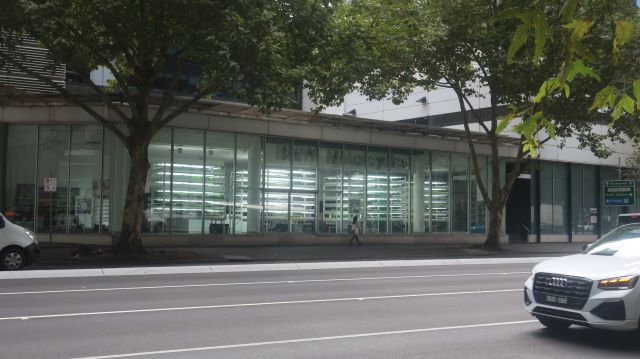
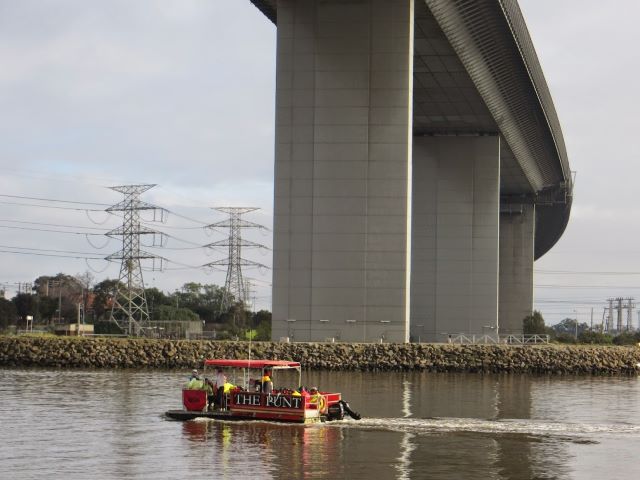
Peter Parrington
Thank you Gio for an interesting article and for your work at Yalukit William. Thank you Janet for reproducing the article.